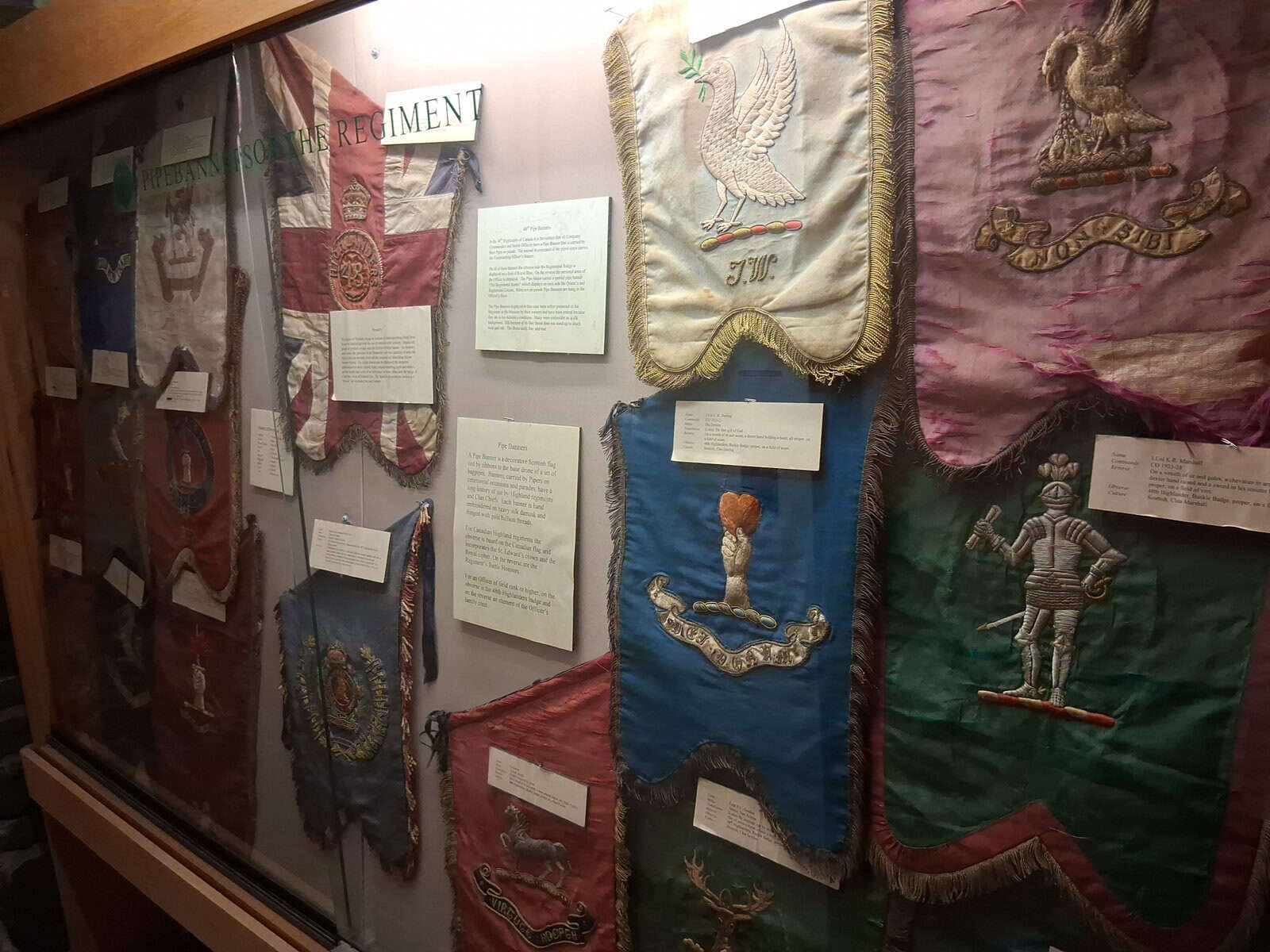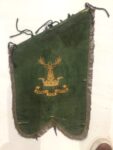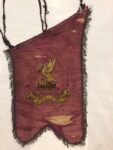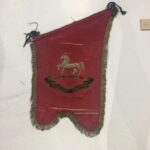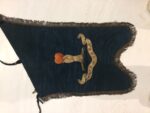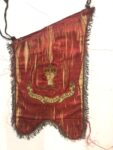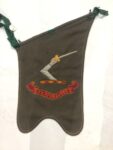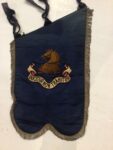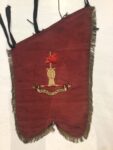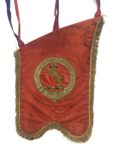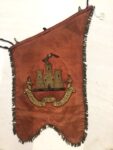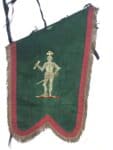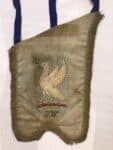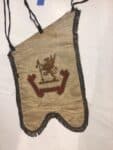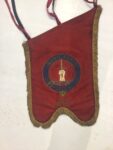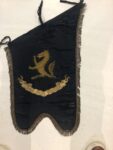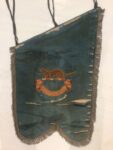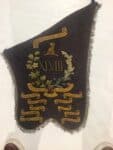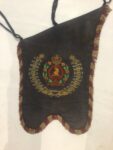Pipe banners are elaborately embroidered flags or pennons attached to the bass drone of a bagpipe, carried by pipers in Highland regiments and civilian pipe bands. Rich in symbolism and tradition, these banners have become important ceremonial and heraldic items within Highland culture.
The custom of decorating pipes with banners likely evolved from medieval military and clan traditions. In Scotland, a banner or standard was an essential emblem of authority and identity on the battlefield. By the 18th and 19th centuries, when Highland regiments were formally incorporated into the British Army, pipe banners began to serve as miniature standards displaying regimental colours, battle honours, or the arms of colonels and patrons.
Each banner is typically made of silk or velvet and heavily adorned with gold or silver embroidery, bullion fringe, and heraldic devices. Designs often incorporate the regimental badge, motto, and sometimes the royal cypher if the unit holds royal patronage. In some cases, the banner will bear the arms or crest of a colonel-in-chief or honorary colonel, signifying their role as patron and supporter of the regiment.
Pipe banners are carried mainly on formal occasions: regimental dinners, church parades, military tattoos, remembrance services, and presentations of colours. They are never flown like ordinary flags but remain attached to the piper’s instrument, adding both visual splendour and a reminder of lineage and duty.
In the 48th the Commanding Officer’s banner is carried by the second-in-command of the pipe band. The Pipe Majors banner contains representations of the Queen’s Colour on the one side and the Regimental Colour on the other. All other pipe banners contain the family crest of the officer who donated the banner on one side and the regimental crest on the other. The piper’s pipe ribbons and cords must never hang on the Regimental side of the banner.

